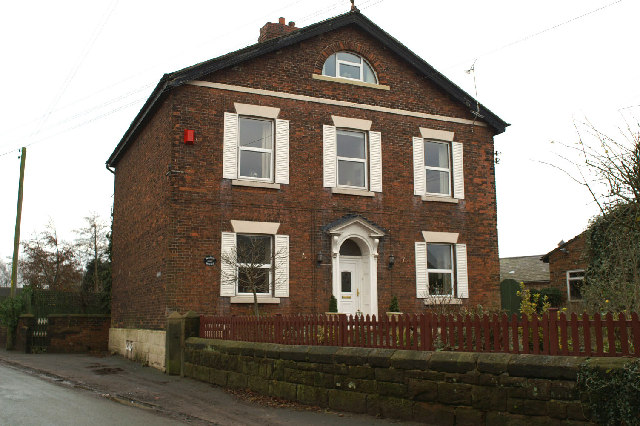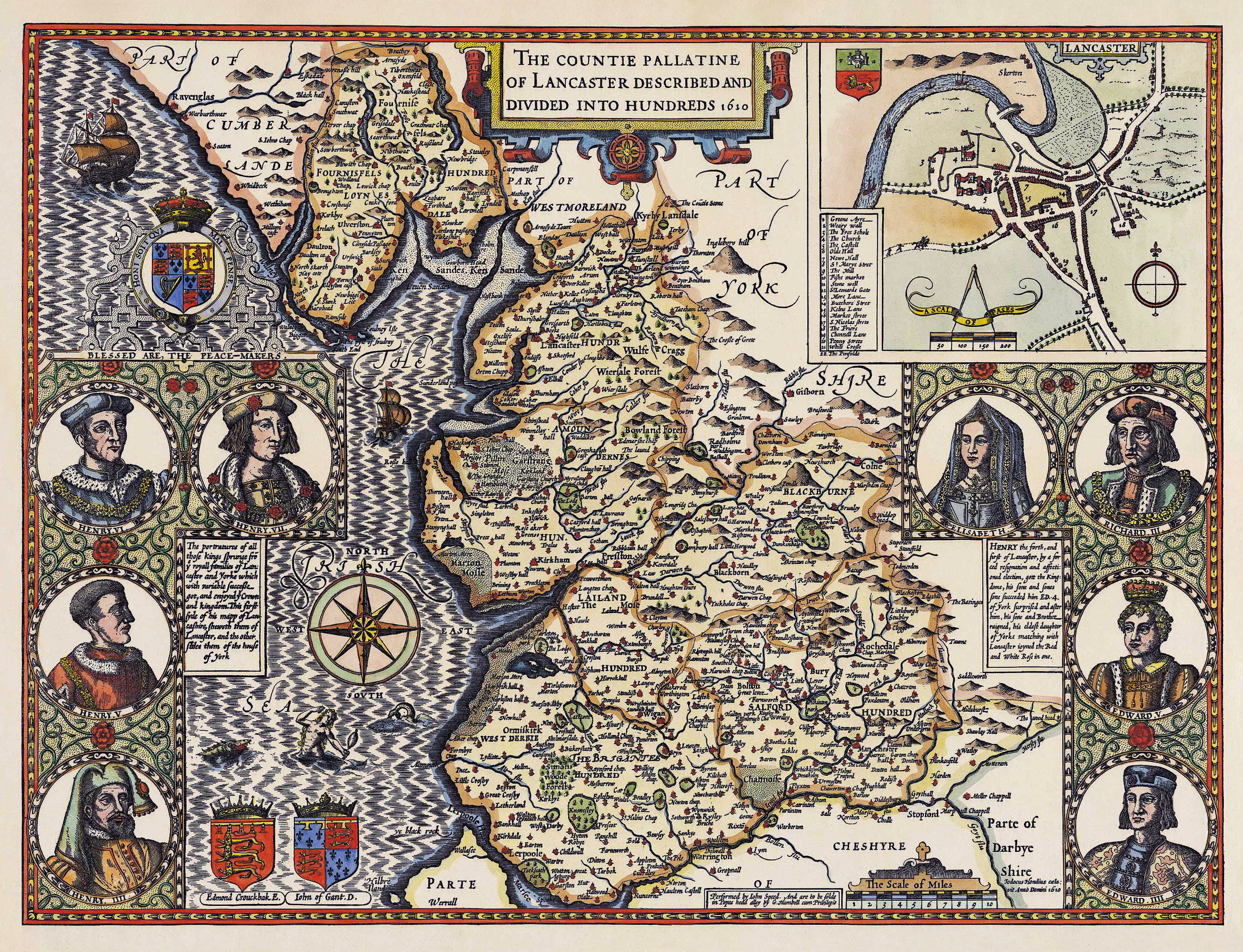|
Preston On The Hill
Preston on the Hill is a village in the civil parish of Preston Brook and the unitary authority of Halton, in Cheshire, England. It is between the villages of Daresbury to the north and Dutton to the south. The village comprises the hamlets of Windmill Lane, Waterfront, Cotton's Bridge, Tunnel End North, Tunnel Top and Barker's Hollow as well as several farms including White House, Little Manor, New Manor, Windmill Farm and Humble Bee House. Etymology The name Preston means "priest's house, farm or settlement" and is derived from the Old English ''prēost'' (a priest) and ''tūn'' (a farmstead or settlement). The meaning may refer to a priest from Norton Priory being housed on the edge of the priory estates. History Despite its prominent position on a hilltop no evidence has been found in Preston-on-the-Hill of Neolithic, Bronze Age or Iron Age man having a settlement or even a fortification there. The Roman road from their settlement at Wilderspool near Warrington to the ... [...More Info...] [...Related Items...] OR: [Wikipedia] [Google] [Baidu] |
Borough Of Halton
("Industry fills the ship") , image_skyline = Runcorn Bridge - geograph.org.uk - 1701094.jpg , imagesize = , image_caption = The Silver Jubilee Bridge at dusk , image_flag = , flag_size = , image_seal = , seal_size = , image_shield = , shield_link = , shield_size = , image_blank_emblem = , blank_emblem_size = 200px , blank_emblem_type = Arms of Halton Borough Council , blank_emblem_link = , mapsize = 250px , map_caption = Halton shown within Cheshire , image_map = Halton UK locator map.svg , image_dot_map = , dot_mapsize = , dot_map_caption = , dot_x = , dot_y ... [...More Info...] [...Related Items...] OR: [Wikipedia] [Google] [Baidu] |
Baron Of Halton
The Barony of Halton, in Cheshire, England, comprised a succession of 15 barons and hereditary Constables of Chester under the overlordship of the Earl of Chester. It was not an English feudal barony granted by the king but a separate class of barony within the County Palatine of Chester. After the Norman conquest, William the Conqueror created the three earldoms of Shrewsbury, Hereford and Chester to protect his border with Wales. In 1071, the Earl of Chester, Hugh Lupus, made his cousin, Nigel of Cotentin, the 1st Baron of Halton. Halton was a village in Cheshire which is now part of the town of Runcorn. At its centre is a rocky prominence on which was built Halton Castle, the seat of the barons of Halton. Nigel of Cotentin :(c. 1071–1080) Nigel was the hereditary Constable of Chester. In 1077 he fought against the Welsh at the Battle of Rhuddlan. It is almost certain that he built a motte-and-bailey castle on Halton Hill. William fitz Nigel :(1080–1134) William f ... [...More Info...] [...Related Items...] OR: [Wikipedia] [Google] [Baidu] |
Township (England)
In England, a township (Latin: ''villa'') is a local division or district of a large parish containing a village or small town usually having its own church. A township may or may not be coterminous with a chapelry, manor, or any other minor area of local administration. The township is distinguished from the following: *Vill: traditionally, among legal historians, a ''vill'' referred to the tract of land of a rural community, whereas ''township'' was used when referring to the tax and legal administration of that community. *Chapelry: the 'parish' of a chapel (a church without full parochial functions). *Tithing: the basic unit of the medieval Frankpledge system. 'Township' is, however, sometimes used loosely for any of the above. History In many areas of England, the basic unit of civil administration was the parish, generally identical with the ecclesiastical parish. However, in some cases, particularly in Northern England, there was a lesser unit called a township, being a ... [...More Info...] [...Related Items...] OR: [Wikipedia] [Google] [Baidu] |
Manor House - Geograph
Manor may refer to: Land ownership *Manorialism or "manor system", the method of land ownership (or "tenure") in parts of medieval Europe, notably England *Lord of the manor, the owner of an agreed area of land (or "manor") under manorialism *Manor house, the main residence of the lord of the manor *Estate (land), the land (and buildings) that belong to large house, synonymous with the modern understanding of a manor. *Manor (in Colonial America), a form of tenure restricted to certain Proprietary colonies *Manor (in 17th-century Canada), the land tenure unit under the Seigneurial system of New France Places * Manor railway station, a former railway station in Victoria, Australia * Manor, Saskatchewan, Canada * Manor, India, a census town in Palghar District, Maharashtra * The Manor, a luxury neighborhood in Western Hanoi, Vietnam United Kingdom * Manor (Sefton ward), a municipal borough of Sefton ward, Merseyside, England * Manor, Scottish Borders, a parish in Peeblesshire, ... [...More Info...] [...Related Items...] OR: [Wikipedia] [Google] [Baidu] |
Greenall's
De Vere is a hotels and leisure business, which until the late 1990s was a brewing company known as Greenall's. It used to be listed on the London Stock Exchange and was once a constituent of the FTSE 100 Index. History Greenall's Brewery was founded by Thomas Greenall in 1762. Initially based in St Helens, the company established a second brewery at Wilderspool, south of Warrington in 1787. It bought the Groves & Whitnall Brewery in Salford in 1961, Shipstone's Brewery in Nottingham in 1978 and Davenport's Brewery in Birmingham in 1986. For much of the 20th century, the company traded as Greenall Whitley & Co Limited. The St Helens brewery was demolished in the 1970s to make way for a new shopping centre. The Warrington brewery on the edge of Stockton Heath was bought by Bruntwood, renamed Wilderspool Business Park and is now let to office occupiers. The company ceased brewing in 1991 to concentrate on running pubs and hotels. In 1999, the tenanted wing of the Greenall's ope ... [...More Info...] [...Related Items...] OR: [Wikipedia] [Google] [Baidu] |
Gilbert Greenall, 1st Baron Daresbury
Gilbert Greenall, 1st Baron Daresbury, (30 March 1867 – 24 October 1938), known as Sir Gilbert Greenall, 2nd Baronet, from 1894 to 1927, was a British brewer, business man, landowner, peer, and master of foxhounds. Greenall was the son of Sir Gilbert Greenall, 1st Baronet. The family's wealth was based on the brewing business established by Greenall's great-grandfather Thomas Greenall in 1762 (which later became the Greenall's Group). His father also had large interests in canals and banking. Greenall succeeded his father in the baronetcy in 1894. In the late 1890s, Greenall sought the position of Master of the Cheshire Foxhounds, but was turned down, as he was deemed to be "not quite a gentleman". However, he was taken on as Master by the Belvoir Hunt and served for sixteen years. Greenall served as High Sheriff of Cheshire for the year 1907 and was appointed as a deputy lieutenant the same year. In 1927 he was raised to the peerage as Baron Daresbury, of Walton in the ... [...More Info...] [...Related Items...] OR: [Wikipedia] [Google] [Baidu] |
County Palatine
In England, Wales and Ireland a county palatine or palatinate was an area ruled by a hereditary nobleman enjoying special authority and autonomy from the rest of a kingdom. The name derives from the Latin adjective ''palātīnus'', "relating to the palace", from the noun ''palātium'', " palace". It thus implies the exercise of a ''quasi''-royal prerogative within a county, that is to say a jurisdiction ruled by an earl, the English equivalent of a count. A duchy palatine is similar but is ruled over by a duke, a nobleman of higher precedence than an earl or count. The nobleman swore allegiance to the king yet had the power to rule the county largely independently of the king. It should therefore be distinguished from the feudal barony, held from the king, which possessed no such independent authority. Rulers of counties palatine created their own feudal baronies, to be held directly from them '' in capite'', such as the Barony of Halton. County palatine jurisdictions were crea ... [...More Info...] [...Related Items...] OR: [Wikipedia] [Google] [Baidu] |
George Ormerod
George Ormerod (20 October 1785 – 9 October 1873) was an English antiquary and historian. Among his writings was a major county history of Cheshire, in North West England. Biography George Ormerod was born in Manchester and educated first privately, then briefly at the King's School, Chester, before continuing his education privately again under Rev Thomas Bancroft, vicar of Bolton. He matriculated at Brasenose College, Oxford, in 1803, graduated BA in 1806 and received the honorary degree of MA in 1807. In 1806, when he came of age, he inherited extensive estates in Tyldesley and south Lancashire. In 1808, he married Sarah Latham, the daughter of John Latham (1761–1843), a doctor living in Bradwall Hall, Sandbach. Following their marriage they first lived in Rawtenstall but moved to Great Missenden the following year. In 1810 he was the tenant at Damhouse in Astley. By this time he had become involved with research into the history of Cheshire and to make this task ... [...More Info...] [...Related Items...] OR: [Wikipedia] [Google] [Baidu] |
Fleetwood (noble Family)
Fleetwood is an Anglo-Swedish Baronial family. The lineage was introduced with number 49 in the House of Nobility (Sweden), also known as the ''Riddarhuset''. English origins Descent and claims The House was founded in the 14th century by William Fleetwood from whom all members descend. Married to ''Gwlladis'' in 1320, only daughter and heir to ''Meredith'', son of ''Canuan'', son of ''Conan'', son of ''Owain Gwynedd''. The later, was King of Gwynedd and reigned in 1137 to his death in Nov. 1169 with ''Gwladys ap Llywarch'', a daughter and heir of ''L'Loworth''. Rise to wealth As such, the English family originates in Heskin, Lancashire, but it was of little importance until the 16th century, when Thomas Fleetwood (of the Vache) and his three brothers moved south. The eldest, John Fleetwood, a clerk of Chancery by 1535, acquired a large estate mainly in Staffordshire and Lancashire, in each of which counties he was twice High sheriff, and of the two others the elder, Edm ... [...More Info...] [...Related Items...] OR: [Wikipedia] [Google] [Baidu] |
Earls Of Macclesfield
Earl of Macclesfield is a title that has been created twice. The first creation came in the Peerage of England in 1679 in favour of the soldier and politician Charles Gerard, 1st Baron Gerard. He had already been created Baron Gerard, of Brandon in the County of Suffolk, in 1645, and was made Viscount Brandon, of Brandon in the County of Suffolk, at the same time as he was given the earldom. These titles are also in the Peerage of England. Lord Macclesfield was the great-grandson of the distinguished judge Sir Gilbert Gerard, Master of the Rolls from 1581 to 1594. He was succeeded by his eldest son, the second Earl. He was involved in the Rye House Plot of 1683, was sentenced to death but later pardoned by the King. On his death without legitimate issue in 1701 the titles passed to his younger brother, the third Earl. He had earlier represented Yarmouth, Lancaster and Lancashire in the House of Commons. When he died in 1702 the titles became extinct. William Dorington or Dor ... [...More Info...] [...Related Items...] OR: [Wikipedia] [Google] [Baidu] |
Baron Gerard
There have been three baronies created for the Gerard family who lived historically at Bryn, Ashton-in-Makerfield, Lancashire and Kingsley, Cheshire, in the 13th century. The third and current barony was created in 1876. History The earliest traceable member of the family that gave rise to the Barons Gerard was a William Fitz Gerard, who lived during the reign of Henry III of England and obtained his lands in Kingsley, Cheshire, by marriage Emma, daughter of Richard de Kingsley. Traditional genealogical sources have shifted this man back in time and given the family a shared origin with the Hiberno-Norman FitzGeralds, Dukes of Leinster in the Peerage of Ireland, and they adopted the same arms as that famous family, ''argent, a saltire gules'', before the 17th century in place of an earlier coat bearing a lion. They were noted as having exasperated heralds by long ignoring their entreaties to be allowed to record the family's pedigree, arms, and early land documents. First cr ... [...More Info...] [...Related Items...] OR: [Wikipedia] [Google] [Baidu] |
Manorialism
Manorialism, also known as the manor system or manorial system, was the method of land ownership (or "tenure") in parts of Europe, notably France and later England, during the Middle Ages. Its defining features included a large, sometimes fortified manor house in which the lord of the manor and his dependents lived and administered a rural estate, and a population of labourers who worked the surrounding land to support themselves and the lord. These labourers fulfilled their obligations with labour time or in-kind produce at first, and later by cash payment as commercial activity increased. Manorialism is sometimes included as part of the feudal system. Manorialism originated in the Roman villa system of the Late Roman Empire, and was widely practiced in medieval western Europe and parts of central Europe. An essential element of feudal society, manorialism was slowly replaced by the advent of a money-based market economy and new forms of agrarian contract. In examining the o ... [...More Info...] [...Related Items...] OR: [Wikipedia] [Google] [Baidu] |





